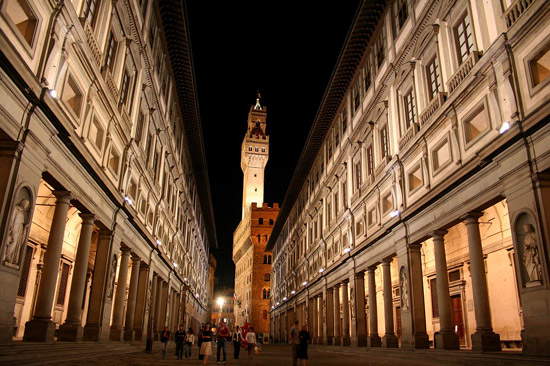If one were to derive a message from the appointment of the twenty directors of the new state museums, whose names were published this morning on the MiBACT website, that message would speak of a radical break with the past-but up to a point.
That rupture is especially consummated at the moment when some distinguished candidates, with very high-level experience in the museums they had directed until a few weeks ago, have been preferred competitors who are indeed titled and qualified, but coming from totally different situations. I am thinking, for example, of the most striking case: that of Antonio Natali, the excellent director of the Uffizi, who was replaced by the German Eike Schmidt, or Giovanna Paolozzi Strozzi, who was competing for the Palazzo Ducale in Mantua, which recovered from the 2012 earthquake under her leadership, to whom the Austrian Peter Assmann was preferred, or Angelo Tartuferi, a profound connoisseur of the Galleria dell’Accademia in Florence in whose place the German manager Cecilie Hollberg was chosen. Continuity with the past, on the other hand, occurred in only one case, that of the Borghese Gallery, which saw the confirmation of Anna Coliva: the management of the Roman museum has often been criticized in recent times. We recall the controversy over the glamorous fest or those over certain exhibitions that are not exactly in line with the institution’s tradition: is the choice to open to private individuals and unconventional initiatives therefore the winning one? And in this sense, does Anna Coliva’s confirmation constitute a signal? Recall, in fact, that the posts were awarded not only on the basis of titles, but also, as can be easily read in the call for applications, on the basis of the candidate’s communication skills, ability in organizing fund raising and devising communication projects, experience in managing relations with other public and private institutions, and so on.
 |
| The Uffizi Gallery. Photo Credit |
Returning to the break with the past, another novelty is the almost unprecedented presence of figures with more markedly managerial connotations: this is the case of the aforementioned Hollberg at the Accademia, but we could also mention James Bradburne, who has worked excellently at Palazzo Strozzi and will hopefully replicate the successful Florentine experience at the Pinacoteca di Brera, and again the Bolognese Mauro Felicori, a municipal manager in Bologna specializing in cultural economics who will go in charge of the Reggia di Caserta. Perhaps that museums will have to be run as if they were “cultural enterprises,” just to refer to the field in which the aforementioned Felicori is an expert? It would seem to address in this sense also the opening to several figures (among them many Italians) who come from experiences abroad, but as we wrote about a month ago, having accrued years of work, even significant, abroad, does not automatically make the candidate who comes from outside better than the one who knows perfectly the Italian reality. When not the territorial one: let’s remember that Italian museums, because of their history and ties to their territory, are very different from many foreign museums. Are many of the new directors familiar with the complexity of the institutions they will be heading, and will they have the experience to know how to manage it?
For now, for sure, we only have the names of the directors (all of whom have a high scientific profile): the criteria on the basis of which they were chosen from the trios of candidates that emerged after the orals are beyond nebulous, and we await clarity. Indeed, it is crucial to understand why some contenders managed to prevail over others (in these hours, almost everyone is wondering, for example, why Antonio Natali was not reappointed, having worked at the Uffizi as best as he could throughout his tenure). The announcement said that they would be selected by the Minister of Cultural Heritage “on the basis of the analysis conducted by the commission and the final judgment”: perhaps it would be good if some indication of that judgment leaked out. And finally, there is another certain fact: so far little has changed in the logic that should direct cultural heritage. Politicians still do not seem to have grasped the fact that this is a strategic sector in which to invest in order to make the country grow in every sense, because a country that instead of investing in culture decides to cut its funds is a country without a future. Unfortunately, lately we have been thinking only according to the logic of economics: that is what culture does not need. And in such a situation, changing the names of directors may not be sufficient condition to trigger real change: a change of mentality is needed. Will, therefore, a new course be possible, perhaps initiated with the contribution of the new directors? If such a change fails to get off the ground, the directors, to whom we send our warmest wishes for good work, will risk finding themselves in serious difficulties: and at this point it would perhaps have been better to keep the directors of yesteryear, who knew well the situation in which culture in our country finds itself. But, as Antonio Natali himself elegantly pointed out in his first statements to the press, “a country that says it wants to change could not afford to say that the old director remained.”
Warning: the translation into English of the original Italian article was created using automatic tools. We undertake to review all articles, but we do not guarantee the total absence of inaccuracies in the translation due to the program. You can find the original by clicking on the ITA button. If you find any mistake,please contact us.